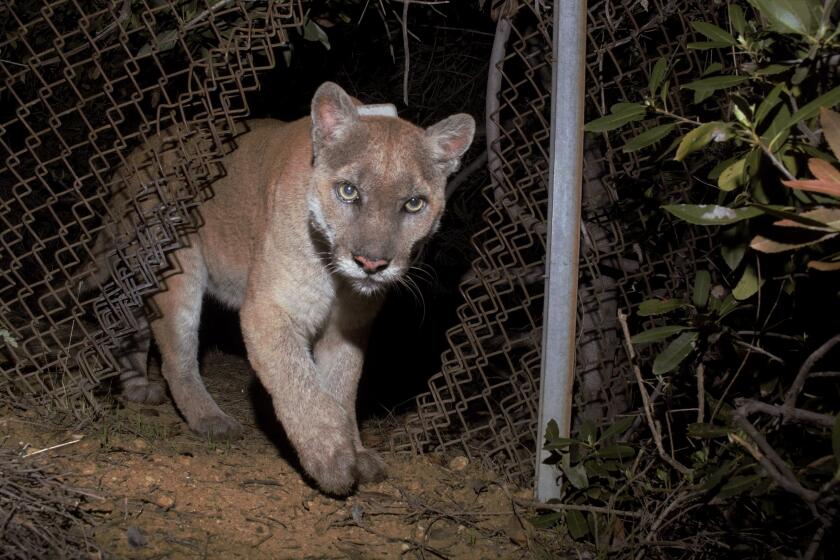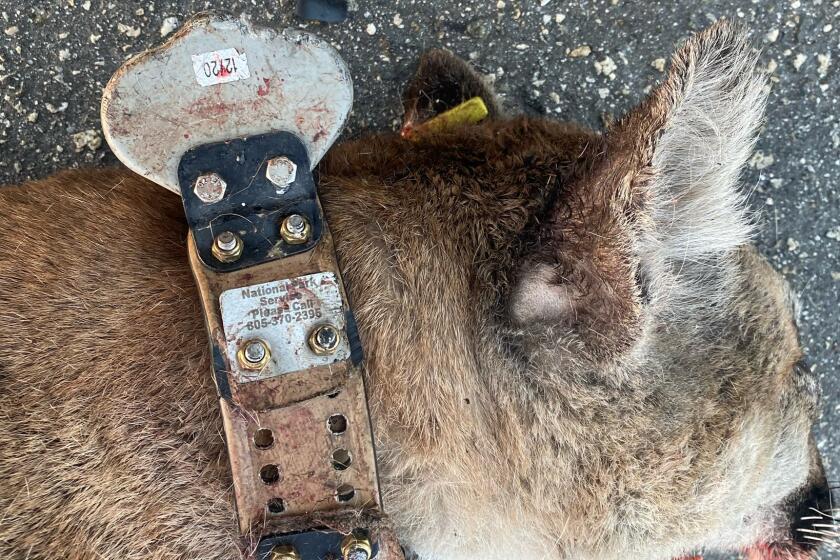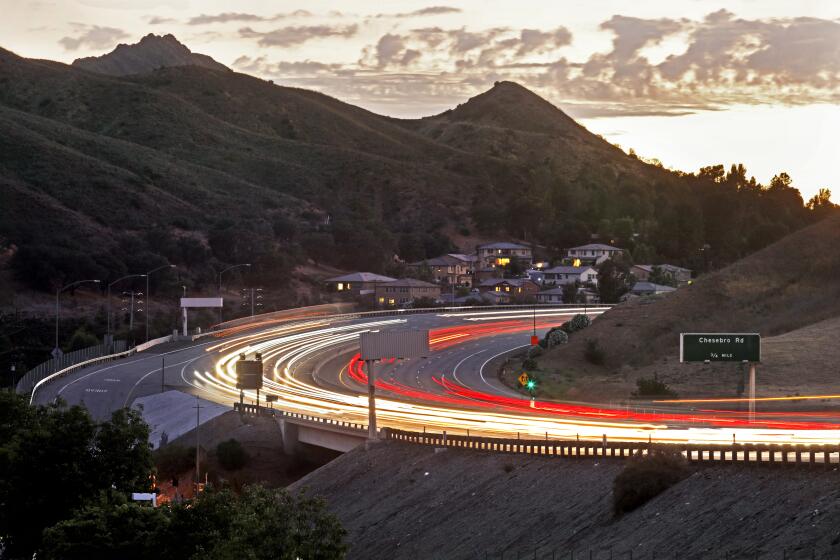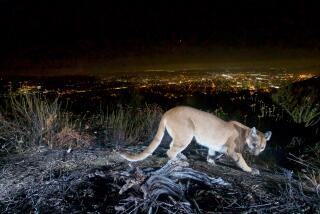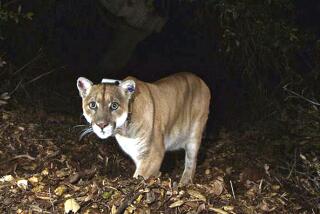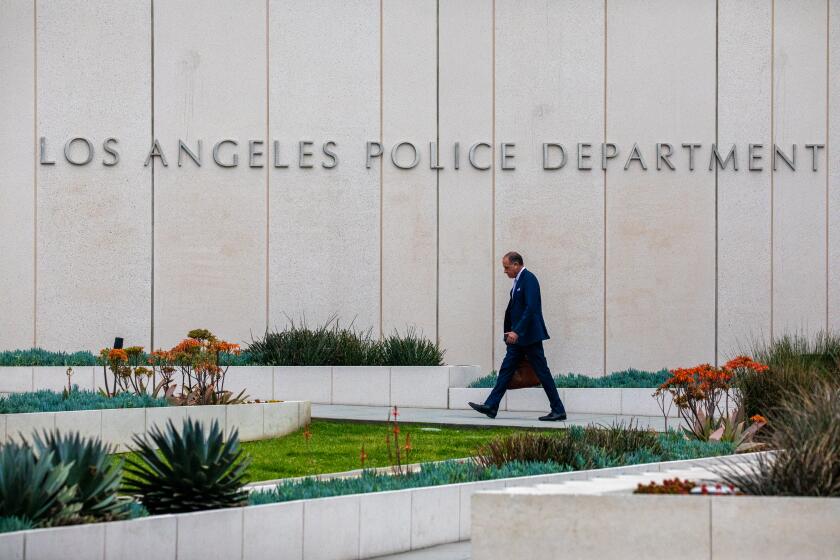18-month old mountain lion P-97 struck and killed on 405 Freeway
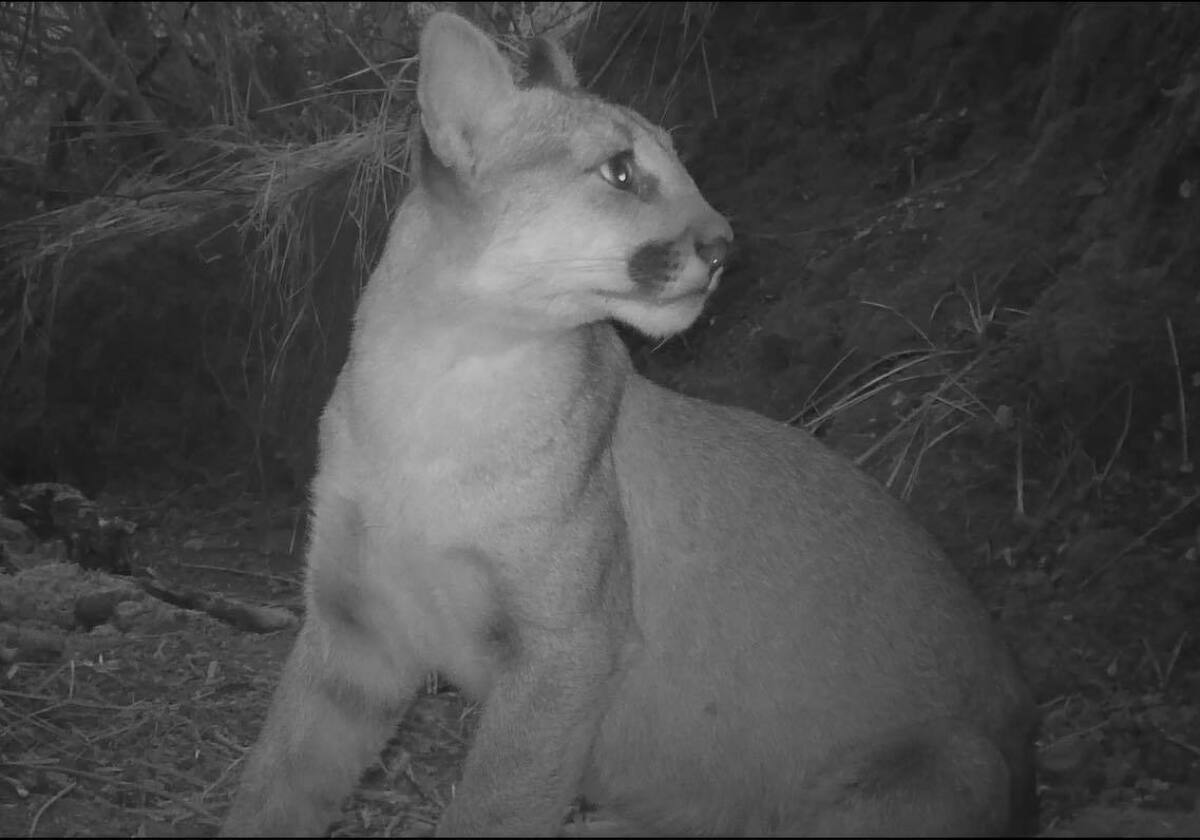
A mountain lion was struck and killed on the 405 Freeway near Brentwood early Thursday morning, only one day before the groundbreaking of L.A.’s highly anticipated wildlife bridge designed to provide safe passage for animals hemmed in by urban sprawl.
California Highway Patrol officers received a call around 1 a.m. about an animal lying in the road on the southbound side of the freeway just south of the Getty Center Drive exit, officials said.
Los Angeles’ famed mountain lion P-22 is known to have made daring crosses of the 405 and 101 freeways in the past, and some initially feared he was the victim of the collision.
But the lion was identified Thursday afternoon as P-97, an 18-month-old male who had recently separated from his mother, P-54, according to officials with the National Park Service in the Santa Monica Mountains.
“He recently dispersed from her, and usually young mountain lions are trying to find a territory of their own,” said Jeff Sikich, a biologist with the Park Service. “He headed due east, and so he was at the eastern edge of the Santa Monica Mountains near the 405 Freeway, and then his GPS collar sent the last signal at midnight. Then we didn’t receive any more.”
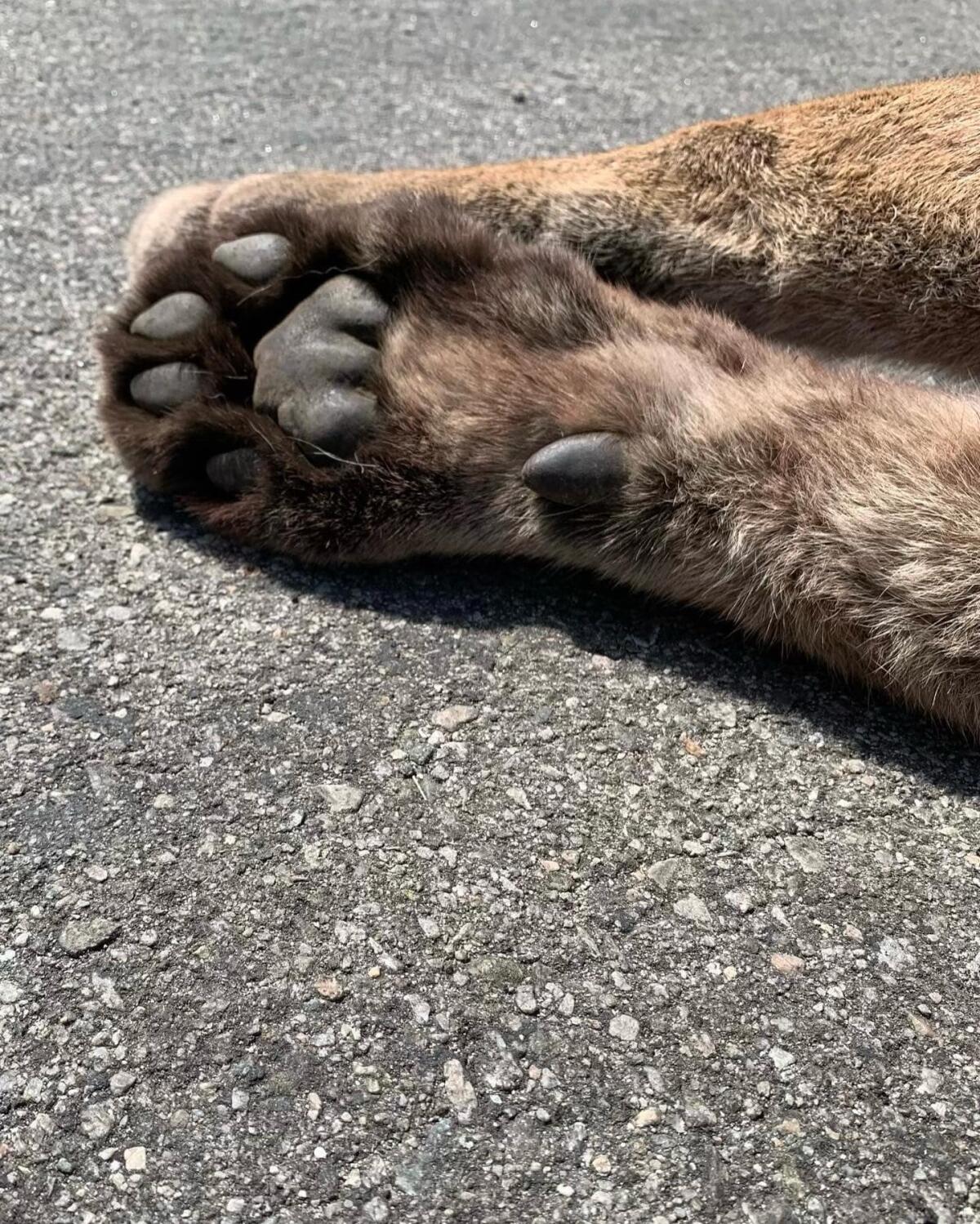
P-97’s body was picked up by the California Department of Transportation and taken to the West Los Angeles Animal Shelter, officials said in a post on Facebook. Though his GPS radio collar was not located, he was identified by an ear tag and by the GPS readings.
He is the 26th mountain lion to be killed by a vehicle in the Park Service’s two decades of studying the big cats in the region, they said.
The mountain lion’s death is also the second to be reported in the Southland in less than a month. In March, a collared lion known as P-104 was struck and killed on Pacific Coast Highway.
But the 405 Freeway area near the Getty Center has proved particularly hazardous to mountain lions, said Beth Pratt, a regional executive director in California for the National Wildlife Federation and an advocate for L.A.’s big cats.
Angelenos can’t help but see themselves in P-22. He’s carved out a life in a crowded city. And though he’s still handsome for his advanced age, he’s terminally single.
A lion known as P-18 was killed near the same exit in 2011, and another, P-61, was killed on the freeway near Sepulveda Boulevard in 2019. In 2009, an uncollared male lion was also killed in the area.
“They come from the Santa Monica Mountains, Topanga State Park, Malibu — lots of green space — but if you keep going, it really winnows them right to that area on the 405,” Pratt said. “The green sort of narrows.”
The region’s network of freeways has kept L.A.’s mountain lions confined to small geographical areas, leading to the lowest genetic diversity documented for the species aside from the critically endangered Florida panther.
The combination of inbreeding, vehicle deaths, urban encroachment and other threats means there’s an almost 1 in 4 chance the cats could become extinct in the Santa Monica and Santa Ana mountains within 50 years, according to some recent studies.
The lion known as P-104 was struck by a car early Wednesday. He’s the first known cougar to be killed in a crash on the coastal highway.
“They’re trying to disperse, but unfortunately, these freeways are barriers,” Pratt said.
Thursday’s death comes just one day before the groundbreaking of the Wallis Annenberg Wildlife Crossing over the 101 Freeway in Agoura Hills near Liberty Canyon. The massive $87-million project is set to become the largest wildlife crossing in the world, providing safe transport for mountain lions and other animals over a busy eight-lane stretch of the freeway.
“This week was supposed to be one of celebration as we mark the groundbreaking of a wildlife bridge in Agoura Hills,” said J.P. Rose, a senior attorney at the Center for Biological Diversity. “Instead, we’re saddened by the violent death of yet another mountain lion. These tragedies are preventable if California invested in more wildlife crossings, which protect both wildlife and people from dangerous collisions.”
A bill currently making its way through the state Legislature, AB 2344, would require state officials to identify “priority roadkill hot spots” and implement at least 10 wildlife crossings each year on state roads, Rose said.
Architect Robert Rock is designing a bridge over the 101 Freeway in Agoura Hills that will stop mountain lions from becoming roadkill.
Pratt said the project in the Liberty Canyon area will help relieve what is known as the biggest “pinch point” for mountain lions in the region. But she also said Thursday’s death points to the urgent need for more solutions moving forward.
“I can’t help but think, if the crossing had been up, would this cat have been saved?” she said. “I know we’re going to make it safer for the rest of the cats, but God, that we even lose one just really makes me sad.”
The crossing near Liberty Canyon is set for completion in 2025.
More to Read
Sign up for Essential California
The most important California stories and recommendations in your inbox every morning.
You may occasionally receive promotional content from the Los Angeles Times.
